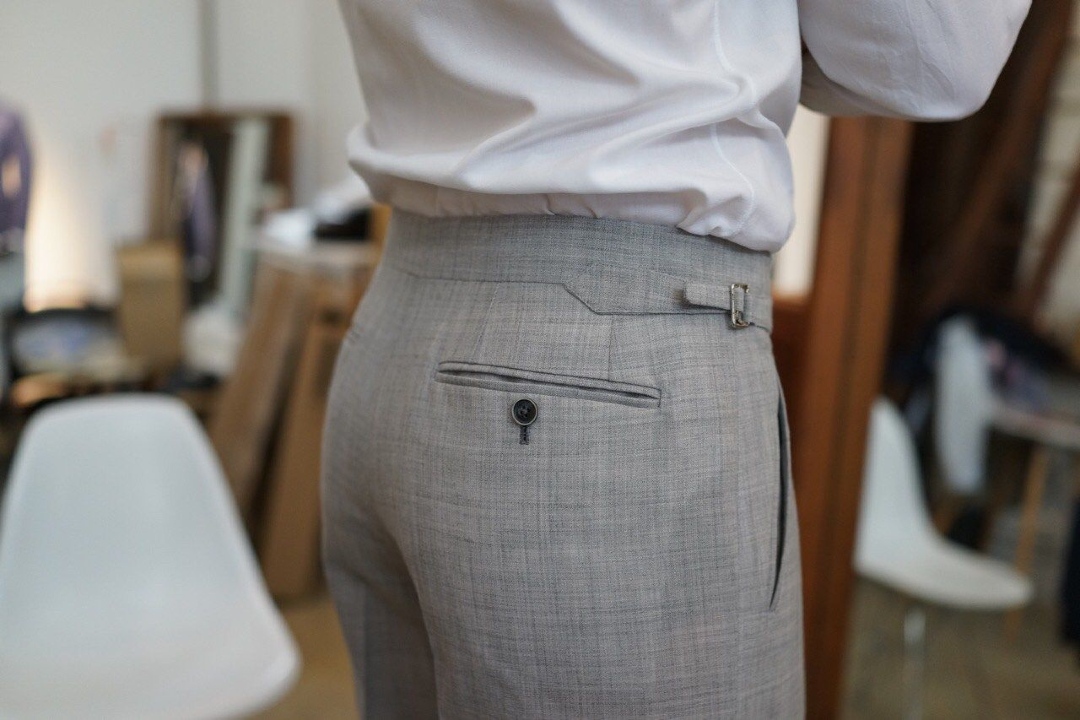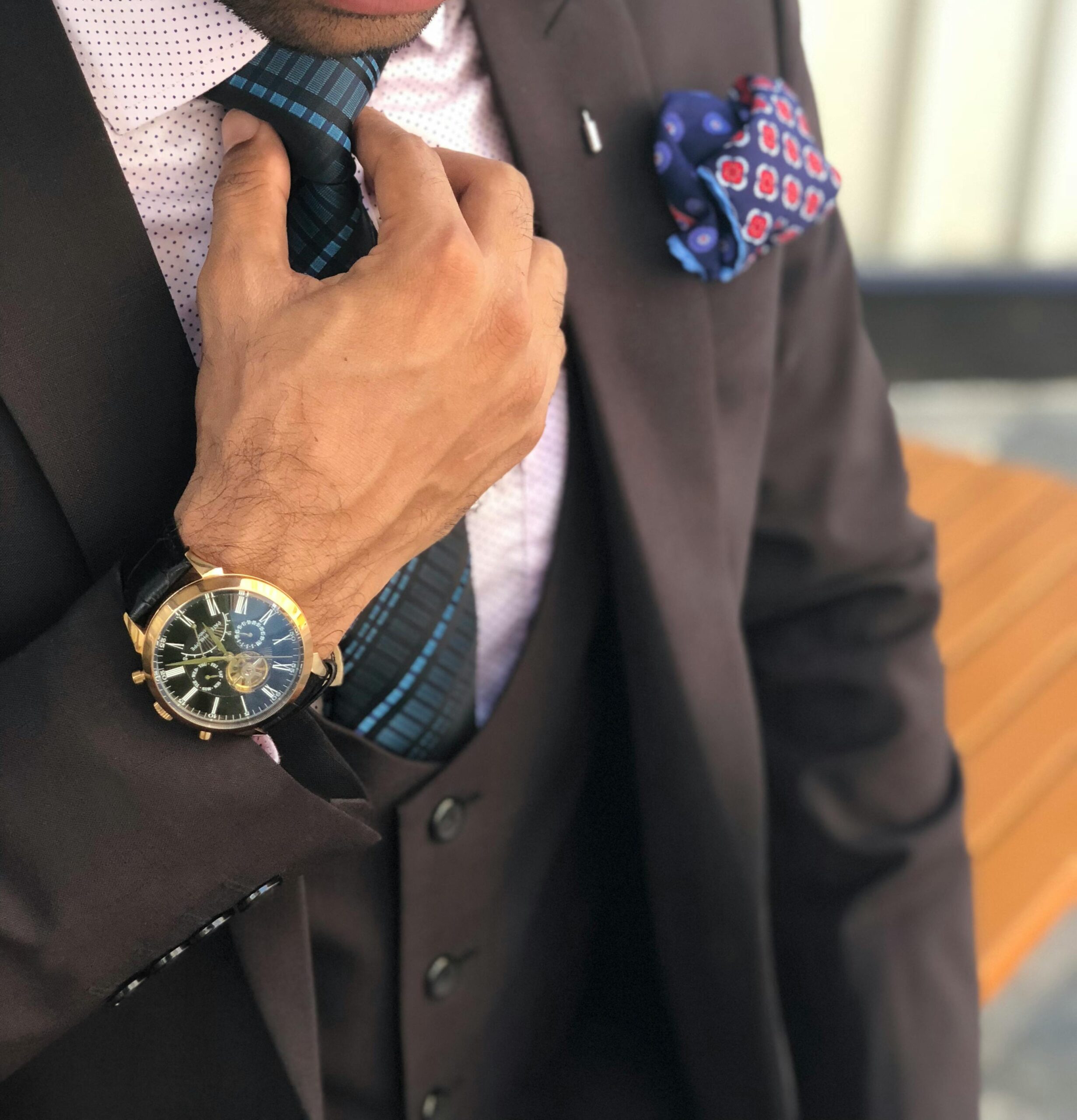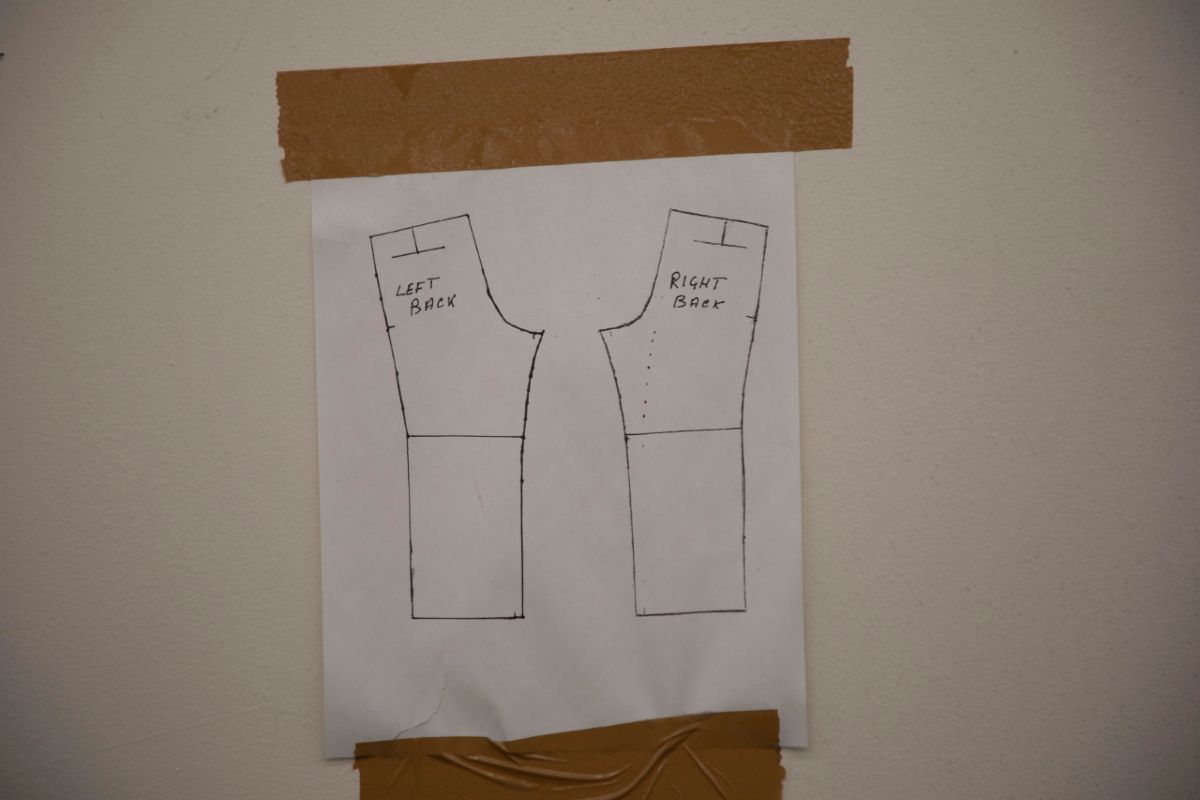 Welcome to The Elements of Custom Suits – trousers, another installment of our suit series. This post’s focus is trousers, but if you missed any of the others in this series and would like to catch up, click any of the links below:
Welcome to The Elements of Custom Suits – trousers, another installment of our suit series. This post’s focus is trousers, but if you missed any of the others in this series and would like to catch up, click any of the links below:
As is the case with any custom garment, the design options you have at your disposal are vast. We’ll give you background on the primary design options we offer, and talk about some history as well.
As you read, keep in mind that we can make your trousers with any detail you see in the pictures that accompany this article. If you have questions about more detailed options, contact us anytime.
Background Musings on Trousers
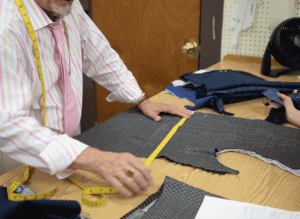 Though wearing pants may not seem spectacular, the act of wearing pants carries a lot of historical meaning. From the 1870’s through the 1940’s, American boys who reached fourteen years of age would graduate from wearing knickers – knee-length pants – to wearing proper full-length trousers. It was a rite of passage into adulthood.
Though wearing pants may not seem spectacular, the act of wearing pants carries a lot of historical meaning. From the 1870’s through the 1940’s, American boys who reached fourteen years of age would graduate from wearing knickers – knee-length pants – to wearing proper full-length trousers. It was a rite of passage into adulthood.
Etymologically, we use the slang phrase “wear the pants” to describe a state of being in charge. The person who “wears the pants” in a household or relationship, for example, possesses the most authority and decision making power. With this in mind (and only tangentially related to menswear), it makes sense that the act of wearing pants itself is a memorable component of the feminist movement.
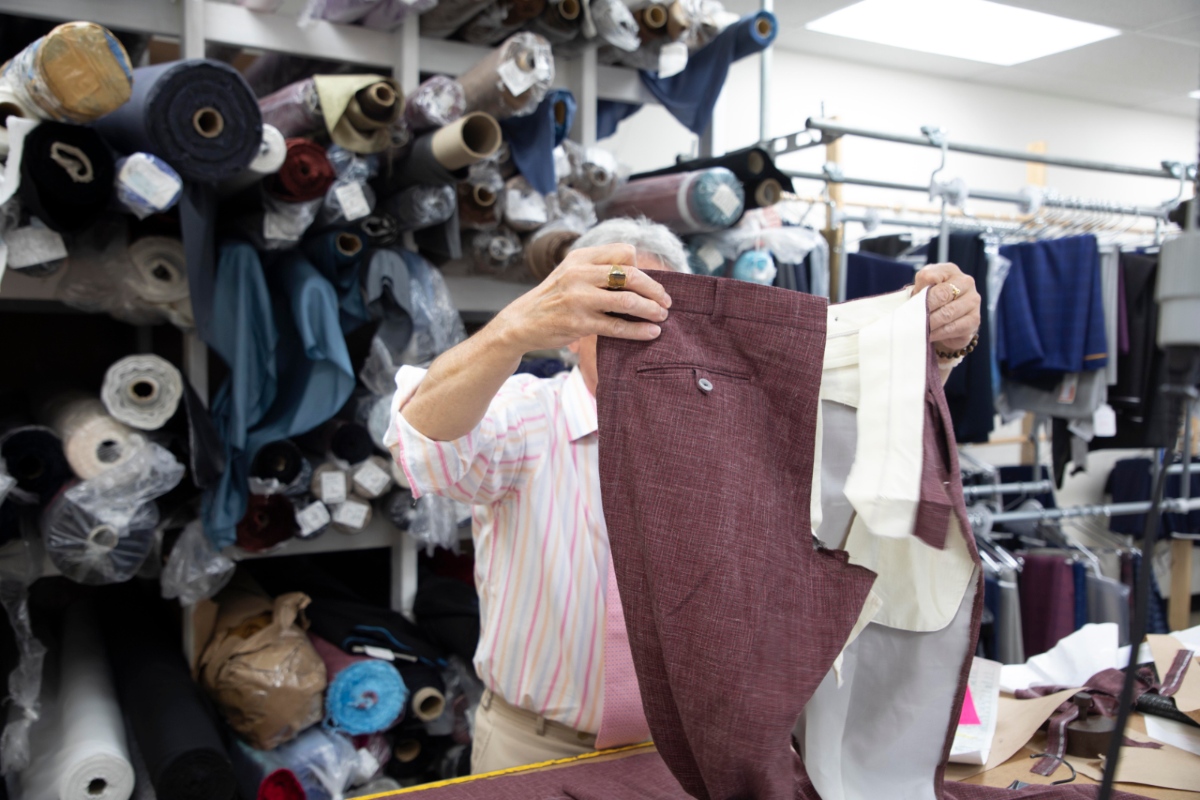 It’s easy – though unwise – to treat pants as an afterthought when designing custom garments. Bold jackets and custom shirts rest close to the face and thus get a lot of attention, but you can still find ways to put your “signature” on your trousers.
It’s easy – though unwise – to treat pants as an afterthought when designing custom garments. Bold jackets and custom shirts rest close to the face and thus get a lot of attention, but you can still find ways to put your “signature” on your trousers.
To that end, below are some of the design decisions you’ll make when crafting a pair of pants.
Custom Suit Trousers Design Elements
Trouser Fronts
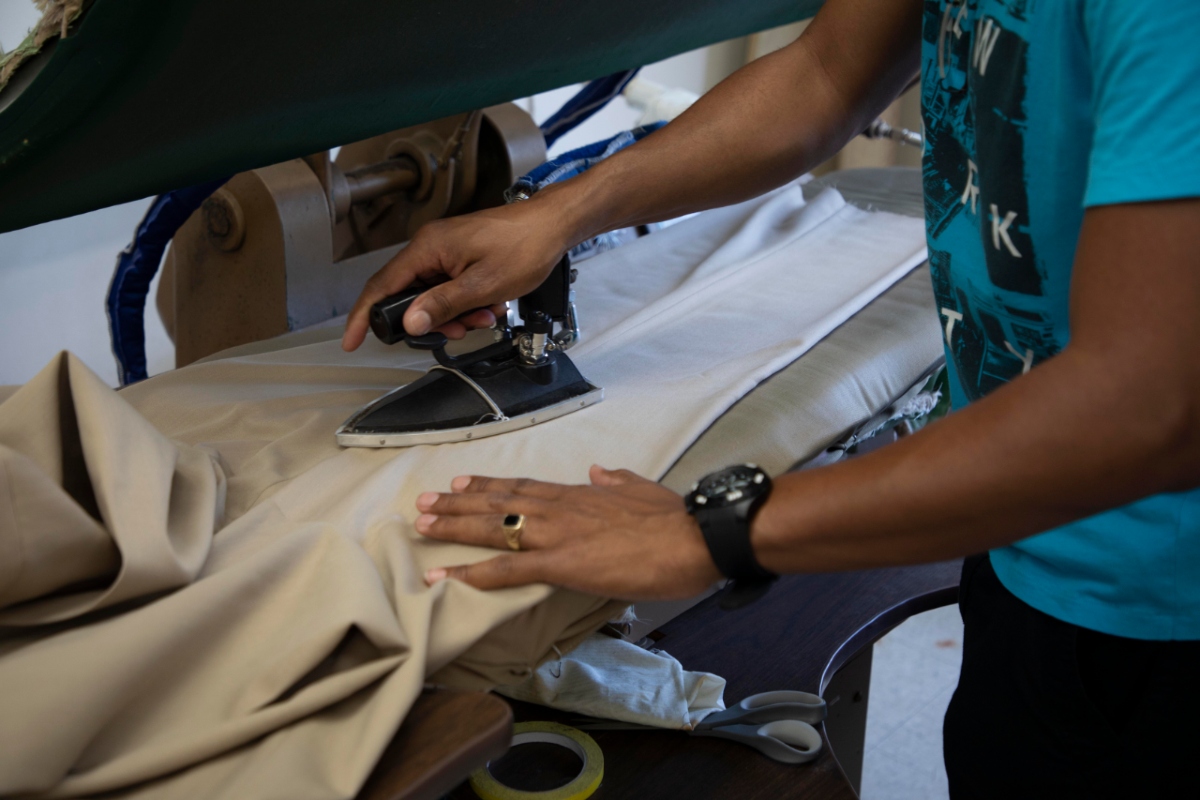 The first element of custom suit trousers is simple: how do you prefer the fronts of your pants to be? Plain (or “flat”) fronts or with pleats? Plain front pants have been much more popular than pleated ones for the better part of twenty years. Most of the pants our clients make are plain front. When properly fitted, they flatter most body types.
The first element of custom suit trousers is simple: how do you prefer the fronts of your pants to be? Plain (or “flat”) fronts or with pleats? Plain front pants have been much more popular than pleated ones for the better part of twenty years. Most of the pants our clients make are plain front. When properly fitted, they flatter most body types.
Still, pleats are a classic, and traditional business, look. They’re especially sympathetic to men with larger midsections since the pleats give the pant room to expand as you move, and especially so when you’re seated. Pleated pants are incrementally dressier than plain front ones, similar to double-breasted suits’ heightened formality over single-breasted ones. We’ve begun to see the resurgence of single pleated trousers on runways, so we anticipate we’ll be making more pleated trousers in the 2020’s.
If you wear pleated pants, you can choose not just the number of pleats (one, two, or three), but also their direction: inward or outward. Outward, or reverse, pleats face the front pockets, and are the most commonly found designs. Meanwhile, inward, or forward, pleats face the fly and are not as common.
Custom Pant Waistband
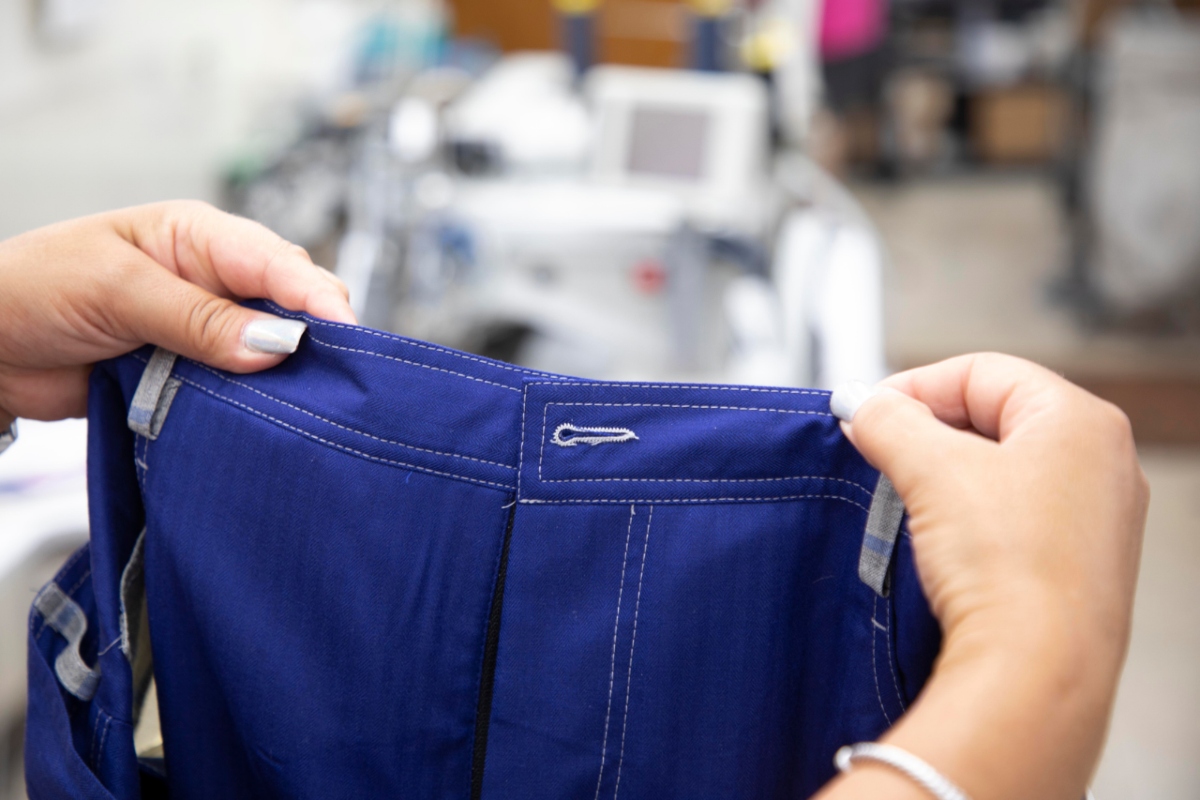 Not all waistbands are created equal. Starting with the closure in the front, a hook & eye closure is most common on dressier pants, while a button-through closure is seen on more casual styles. With a hook & eye, there is also typically a waistband extension (the flap that then buttons secondarily on the outside of the waistband). The length and shape of that extension can both me decided in your personal design session. Standard-width belt loops are the default, but wider ones called “tunnel loops” are also available. You can even choose to make belt loops in a contrasting material. Some men prefer English side straps in lieu of belt loop, which is a rakish look. Men who wear braces and are clothing purists eschew belt loops.
Not all waistbands are created equal. Starting with the closure in the front, a hook & eye closure is most common on dressier pants, while a button-through closure is seen on more casual styles. With a hook & eye, there is also typically a waistband extension (the flap that then buttons secondarily on the outside of the waistband). The length and shape of that extension can both me decided in your personal design session. Standard-width belt loops are the default, but wider ones called “tunnel loops” are also available. You can even choose to make belt loops in a contrasting material. Some men prefer English side straps in lieu of belt loop, which is a rakish look. Men who wear braces and are clothing purists eschew belt loops.
Speaking of braces, it’s standard to put buttons for them inside your waistband. Wearing braces outside the waistband was standard many years ago when they were more or less considered a “personal” garment, always covered by a vest. You could still do this nowadays, but it’d be considered quite rare and may distract from the message you’re trying to convey.
Pockets – Front & Back
 Your front pockets are mostly a matter of how much you’d like them to be angled. At Henry A. Davidsen we offer front pockets in 1/8 top, 1/4 top, and even 1/2 top, which just refers to their angle relative to the pant’s outseam. You can also choose an on-seam pocket (which blends in along the side seam of the pant), an offset pocket (a double piped pocket moved forward of the seam), or a Western-style pocket (closer to, but not exactly the same as, what you would see on a pair of jeans).
Your front pockets are mostly a matter of how much you’d like them to be angled. At Henry A. Davidsen we offer front pockets in 1/8 top, 1/4 top, and even 1/2 top, which just refers to their angle relative to the pant’s outseam. You can also choose an on-seam pocket (which blends in along the side seam of the pant), an offset pocket (a double piped pocket moved forward of the seam), or a Western-style pocket (closer to, but not exactly the same as, what you would see on a pair of jeans).
The lion’s share of our clients opt for 1/4 top pockets. These are versatile and can be dressed up or down, and tend to sit more cleanly with a flat-front pant than its on-seam counterpart. On-seam pockets are just as versatile but are a little quieter. Offset besom pockets are a rarer, more custom look. Western-style pockets are very casual, best-suited for cotton or linen pants.
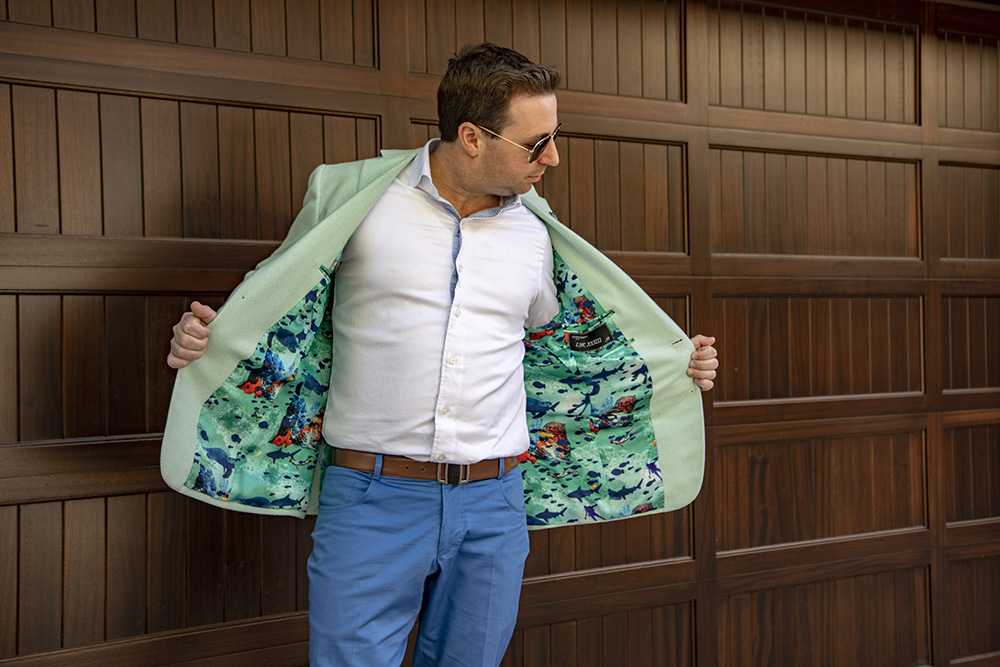
We also make a “jean cut” dress trouser, which is simply a five-pocket denim cut on a worsted wool or cotton pant. We’ll sometimes make the fifth pocket out of the material from a coordinating sport coat, which adds some fun, but still subtle, continuity.
Custom Trouser Bottoms
Your pant bottoms (also referred to as pant hems) can be plain, or they can take cuffs (“turnups” in British English). The old adage says that plain front pants should be matched with plain bottoms, and pleated pants should be matched with cuffed bottoms. The dressier of the two is subject to debate.
The “plain bottom is dressier” argument rests on two ideas: how we wear plain bottoms today, and how cuffs came to be in the first place.
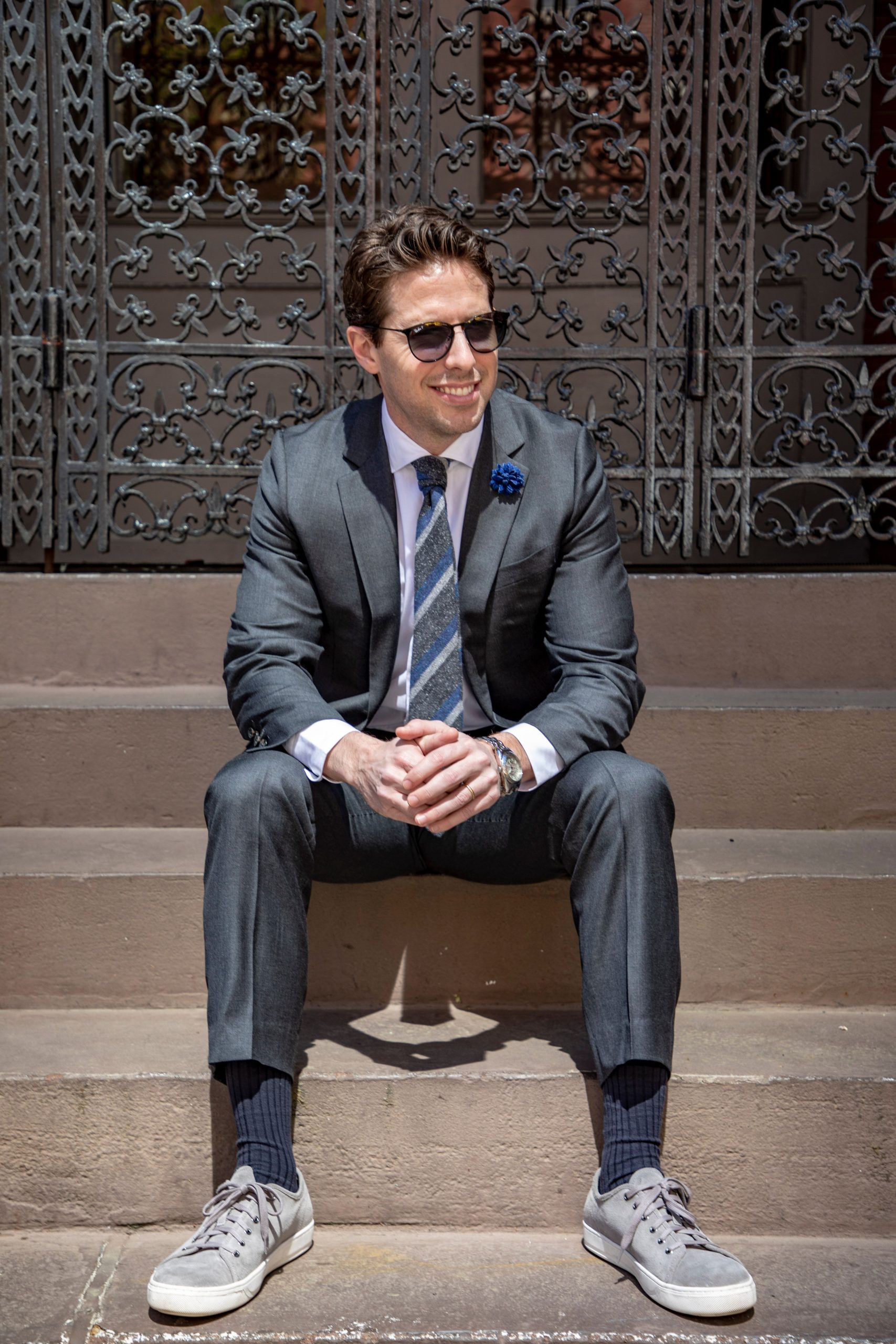 Not only are plain bottoms perfectly acceptable with suits nowadays, they are also required for formalwear. This is a feather in the cap of their dressiness, as is the history of the cuff.
Not only are plain bottoms perfectly acceptable with suits nowadays, they are also required for formalwear. This is a feather in the cap of their dressiness, as is the history of the cuff.
The trouser cuff’s origin is an example of necessity being the mother of invention. British men of means wore tailored country clothing when outdoors – think heavy woolen sport coats and trousers to match. Cuffing the pant bottoms – turning them up, as it were – kept the pant bottoms out of the mud. The style caught on.
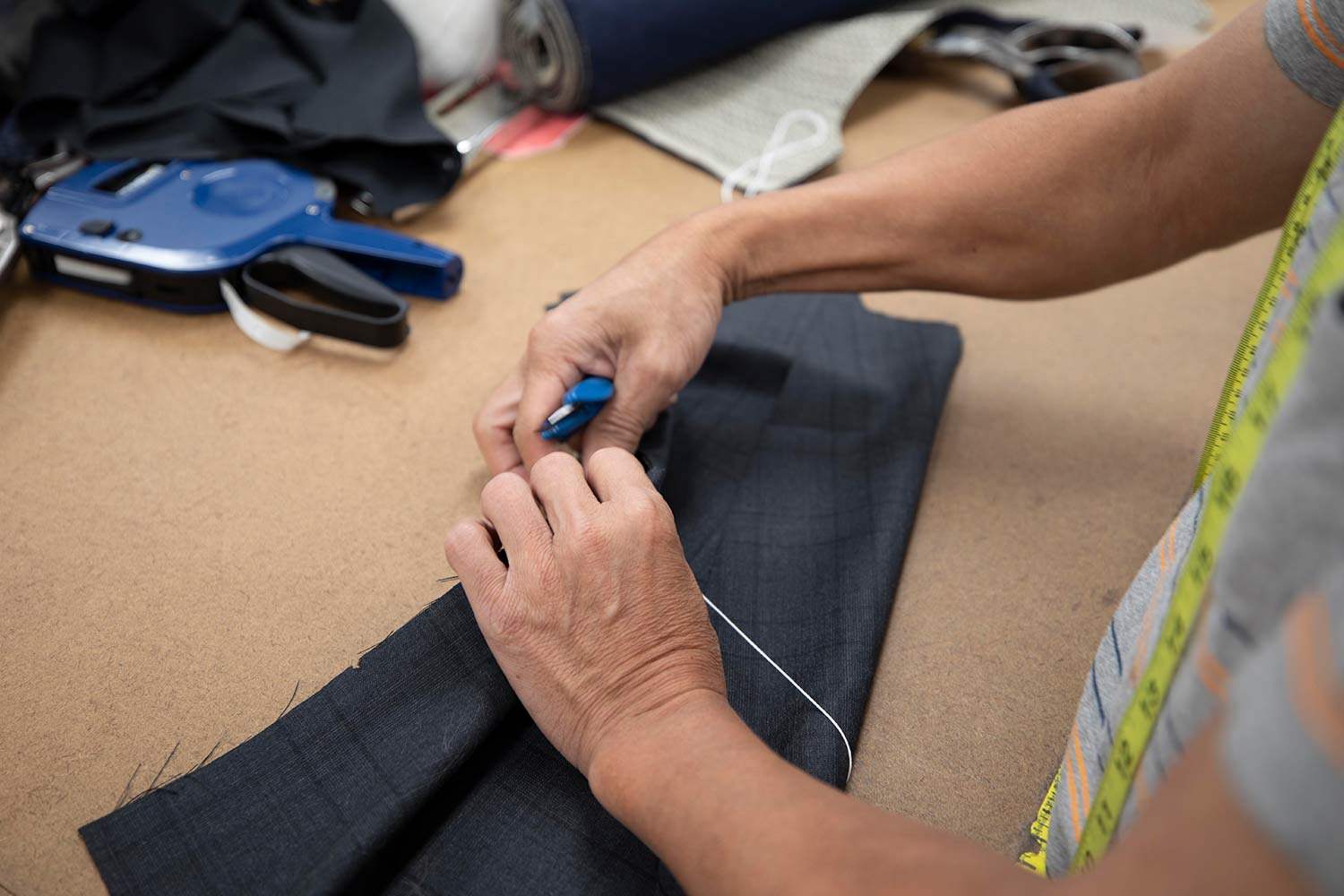 Still, one could make the argument that cuffed pant bottoms are dressier because they’re paired with pleats, the dressier of the two fronts.
Still, one could make the argument that cuffed pant bottoms are dressier because they’re paired with pleats, the dressier of the two fronts.
Buttons, Stitching, & More
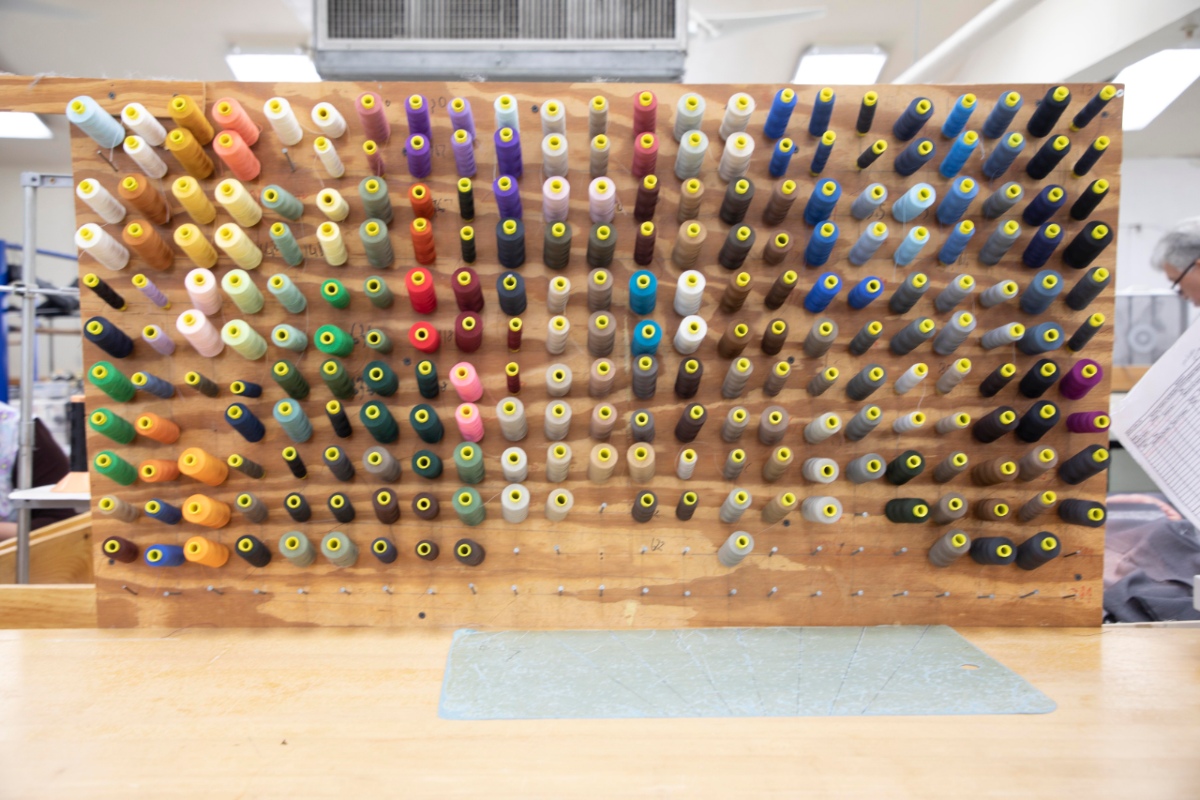 When you’re making pants to go with a suit, your button and stitching colors will likely already be determined when designing the jacket. You can of course deviate from this, but we don’t recommend it.
When you’re making pants to go with a suit, your button and stitching colors will likely already be determined when designing the jacket. You can of course deviate from this, but we don’t recommend it.
If you’re making some a la carte pants, though, it’s easier to take advantage of the full run of buttons and stitching colors. Whether you select muted tones or bolder pops of color is for you and your image consultant to decide.
Conclusion
We hope you found this post informative. If you’re ready to start a conversation about trousers, reach out to us at info@henrydavidsen.com or at 215-310-0219. In the meantime, catch up with our other Elements of a Suit series articles below:
